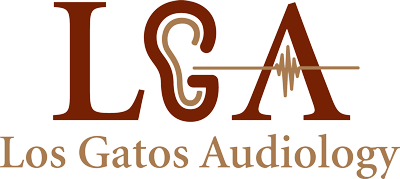As hearing professionals committed to the preservation of auditory health, it is imperative to shed light on occupations that carry an elevated risk of hearing loss. Beyond the typical suspects like construction and manufacturing, there is a nuanced landscape of professions where exposure to hazardous noise levels and ototoxic chemicals is a daily reality. This article explores the occupational hazards that can compromise auditory well-being, highlights the latest advancements in hearing loss prevention, diagnosis, and management, and underscores the critical role of early detection in preserving the gift of hearing.
Occupations at Risk:
Industrial Settings:
In sectors such as manufacturing, construction, and heavy machinery operation, workers are routinely exposed to high levels of noise. Prolonged exposure to these environments can result in noise-induced hearing loss (NIHL), a condition that often develops gradually and may go unnoticed until it reaches an advanced stage.
Military Personnel:
Members of the armed forces face unique challenges to their auditory health. The use of firearms, explosions, and other loud equipment in combat zones can lead to sudden and severe hearing damage. Moreover, the cumulative effect of exposure to these intense noises can contribute to long-term hearing impairment.
Musicians and Entertainment Professionals:
While the joy of music is universal, those who make a living through music are at risk of noise-induced damage. Musicians, sound engineers, and concert staff are exposed to loud decibel levels during rehearsals and live performances, making them susceptible to hearing loss over time.
Healthcare Workers:
Surprisingly, healthcare professionals are not immune to the risk of hearing damage. Operating rooms equipped with noisy machinery, alarms, and sterilization equipment, as well as exposure to ototoxic medications, can contribute to hearing impairment among doctors, nurses, and support staff.
Ototoxic Chemicals:
In addition to noise exposure, certain occupations involve working with ototoxic chemicals, substances that can damage the delicate structures of the inner ear. These chemicals are found in a range of industries, from manufacturing to healthcare. For instance, solvents, heavy metals, and some pharmaceuticals have been identified as ototoxic agents. Individuals working with these substances should be vigilant about protecting their hearing health.
Recent Advancements:
Protective Technologies:
Innovative hearing protection devices have emerged, offering a more customized and effective approach to safeguarding against noise-induced damage. High-fidelity earplugs, noise-canceling earmuffs, and custom-molded ear protection are now available to suit various occupational needs.
Ototoxicity Monitoring:
Cutting-edge developments in occupational health include advancements in monitoring and assessing the impact of ototoxic substances on hearing. Routine screenings and personalized monitoring plans can help identify early signs of ototoxicity, allowing for timely intervention.
Teleaudiology:
The digital age has brought forth teleaudiology services, enabling remote hearing assessments and consultations. This not only enhances accessibility to hearing care but also facilitates early detection and intervention, particularly in situations where individuals may be hesitant or unable to visit a physical clinic.
Future Interventions:
Gene Therapies:
The field of genetics holds promise for the future of hearing loss interventions. Research into gene therapies that could repair or regenerate damaged hair cells in the inner ear is underway, offering hope for a revolutionary approach to treating certain types of hearing loss.
Neurostimulation Techniques:
Exploring the use of neurostimulation to restore auditory function is a burgeoning area of research. Electrical stimulation of the auditory nerve or brain regions associated with hearing could potentially provide relief or improvement for individuals with specific types of hearing loss.
Importance of Early Detection:
The cornerstone of effective hearing care lies in early detection. Regular hearing screenings, especially for individuals in high-risk occupations, can identify subtle changes in hearing health before they escalate into irreversible damage. Early intervention not only preserves hearing but also contributes to overall well-being, as untreated hearing loss is linked to cognitive decline, social isolation, and decreased quality of life.
Conclusion:
As dedicated hearing professionals, it is crucial to be informed about the diverse occupational risks that can compromise auditory health. By staying abreast of the latest advancements in prevention, diagnosis, and management, and by emphasizing the significance of early detection, we can collectively work towards a future where hearing loss is minimized, and individuals in high-risk occupations can enjoy a fulfilling and sonorous life.


